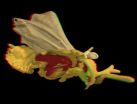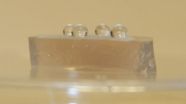(Press-News.org) EAST LANSING, Mich. — Most college students in the United States do not grasp the scientific basis of the carbon cycle – an essential skill in understanding the causes and consequences of climate change, according to research published in the January issue of BioScience.
The study, whose authors include several current and former researchers from Michigan State University, calls for a new way of teaching – and, ultimately, comprehending – fundamental scientific principles such as the conservation of matter.
"Improving students' understanding of these biological principles could make them better prepared to deal with important environmental issues such as global climate change," said Charles "Andy" Anderson, MSU professor of teacher education and co-investigator on the project.
The study was led by Laurel Hartley, assistant professor at the University of Colorado Denver who started the work as a postdoctoral researcher at MSU. Co-researchers include Anderson, Brook Wilke, Jonathon Schramm and Joyce Parker, all from MSU, and Charlene D'Avanzo from Hampshire College.
The researchers assessed the fundamental science knowledge of more than 500 students at 13 U.S. colleges in courses ranging from introductory biology to advanced ecology.
Most students did not truly understand the processes that transform carbon. They failed to apply principles such as the conservation of matter, which holds that when something changes chemically or physically, the amount of matter at the end of the process needs to equal the amount at the beginning. (Matter doesn't magically appear or disappear.)
Students trying to explain weight loss, for example, could not trace matter once it leaves the body; instead they used informal reasoning based on their personal experiences (such as the fat "melted away" or was "burned off"). In reality, the atoms in fat molecules leave the body (mostly through breathing) and enter the atmosphere as carbon dioxide and water.
Most students also incorrectly believe plants obtain their mass from the soil rather than primarily from carbon dioxide in the atmosphere. "When you see a tree growing," Anderson said, "it's a lot easier to believe that tree is somehow coming out of the soil rather than the scientific reality that it's coming out of the air."
The researchers say biology textbooks and high-school and college science instructors need to do a better job of teaching the fundamentals – particularly how matter transforms from gaseous to solid states and vice-versa.
It won't be easy, Anderson said, because students' beliefs of the carbon cycle are deeply engrained (such as the misconception that plants get most of their nutrients from the soil). Instructors should help students understand that the use of such "everyday, informal reasoning" runs counter to true scientific literacy, he said.
The implications are great for a generation of citizens who will grapple with complicated environmental issues such as clean energy and carbon sequestration more than any generation in history, Anderson said.
"One of the things I'm interested in," he said, "is students' understanding of environmental problems. And probably the most important environmental problem is global climate change. And that's attributable to a buildup of carbon dioxide in the atmosphere. And understanding where that carbon dioxide is coming from and what you can do about it fundamentally involves understanding the scientific carbon cycle."
INFORMATION:
College students lack scientific literacy, study finds
2011-01-08
ELSE PRESS RELEASES FROM THIS DATE:
Clinical waste management needs specialized regulation
2011-01-08
A study carried out by the University of Granada (UGR) warns of the need to unify existing plans for clinical waste management in the different autonomous communities to improve recycling and waste disposal. There is currently no specific state-wide regulation, just a framework law that the Spanish Ministry of the Environment and Rural and Marine Affairs (MARM) is planning to reform.
"We carried out a comparison of the clinical waste management regulations and plans in place in the autonomous communities in 2008 to see if there were any differences. We observed distinctions ...
VIB-K.U. Leuven scientists clear the way to alternative anti-angiogenic cancer therapy
2011-01-08
Leuven – Scientists attached to VIB and K.U.Leuven have succeeded in decoding a potential new anti-cancer mechanism. The researchers discovered that normalizing abnormal tumor blood vessels through HRG (histidine-rich glycoprotein) prevents metastasis of tumor cells and enhances chemotherapy efficiency. In tumors, vessels formation is disturbed, leading to inefficient delivery of chemotherapeutic drugs and allowing cancer cells to escape to other parts of the body (metastasis). The normalization of tumor blood vessel formation through HRG works by repressing the production ...
Lessons learned from oil rig disaster
2011-01-08
When interviewed by the BBC, the now retired BP boss Tony Hayward admitted to his company's insufficient response to the Deepwater Horizon rig accident in the Gulf of Mexico. Could the company have been better prepared for what turned out to be one of the biggest oil disasters in history?
"We were making it up day to day," Hayward said of BP's rescue plan. Together with chairman of the board, Carl-Henrik Svenberg, he was held responsible for 11 dead and 17 injured workers. According to the New York Times, five million barrels of oil leaked into the ocean outside the coast ...
For ever and ever: When the wedding flight never ends
2011-01-08
Its stay on this planet was actually meant to be a very short one. Male twisted-wing parasites (Strepsiptera) usually have a life span of only few hours. However, accidentally a specimen of Mengea tertiara, about the size of an aphid, became preserved for 'eternity': during its wedding flight about 42 million years ago it was caught in a drop of tree resin and subsequently almost perfectly conserved in a piece of amber.
PD Dr. Hans Pohl of Friedrich Schiller University Jena (Germany) calls this "a very exceptional stroke of luck." Together with colleagues from Jena, Hamburg ...
A pesky bacterial slime reveals its survival secrets
2011-01-08
Cambridge, Mass., January 7, 2011 – By rethinking what happens on the surface of things, engineers at Harvard University have discovered that Bacillus subtilis biofilm colonies exhibit an unmatched ability to repel a wide range of liquids—and even vapors.
Centimeters across yet only hundreds of microns thick, such slimy bacterial coatings cling to the surfaces of everything from pipes to teeth and are notoriously resistant to antimicrobial agents. The researchers now suspect they know the secret to a biofilm's resiliency.
Published in the January 5th early edition of ...
Researchers pinpoint origin of deadly brain tumor
2011-01-08
Scientists have identified the type of cell that is at the origin of brain tumors known as oligodendrogliomas, which are a type of glioma – a category that defines the most common type of malignant brain tumor.
In a paper published in the December 2010 issue of the journal Cancer Cell, investigators found that the tumor originates in and spreads through cells known as glial progenitor cells – cells that are often referred to as "daughter" cells of stem cells. The work comes at a time when many researchers are actively investigating the role that stem cells which have ...
Rice U. research shows Starbucks' logo redesign could prove beneficial to company
2011-01-08
Despite U.S. consumers' threats of protests in response to the redesigned Starbucks logo unveiled yesterday, the new look may be a smart move in the long run as the coffee company expands into Asian markets, according to a Rice University researcher who has studied consumer reaction to logos.
"The logo of a brand is much more than a pictorial representation of the brand," said Rice Professor of Marketing Vikas Mittal, who has co-authored two studies on customers, logos and brand commitment. "For consumers who are highly committed to the brand, the logo represents a visual ...
Most consumers want predictive tests to learn if a disease is in their future
2011-01-08
BOSTON, Mass.––Consumers may place a high value on information to predict their future health, and may be willing to pay out of pocket to get it. In a national survey conducted by researchers at Tufts Medical Center, roughly 76% of people indicated that they would take a hypothetical predictive test to find out if they will later develop Alzheimer's disease, breast or prostate cancer, or arthritis. On average, respondents were willing to pay $300 to $600, depending on the specific disease and the accuracy of the test.
Published online in the journal Health Economics, ...
Bendy tubes get around
2011-01-08
Theo Odijk, you win. The professor of biotechnology at Delft University of Technology in the Netherlands has a new best friend in Rice University's Matteo Pasquali.
Together with collaborators at the French National Center for Scientific Research (CNRS), the University of Bordeaux, France, and Vrije University, Amsterdam, the Rice professor and his team have settled a long-standing controversy in the field of polymer dynamics: The researchers proved once and for all that Odijk was correct in proclaiming that a little flexibility goes a long way for stiff filaments in ...
Liver disease a possible predictor of stroke: Study
2011-01-08
TORONTO, Ont., January 7, 2011 — People suffering from fatty liver disease may be three times more likely to suffer a stroke than individuals without fatty liver, according to a study by researchers at St. Michael's Hospital and the London Health Sciences Centre. The study is the first to find a link between nonalcoholic fatty liver disease — a disease characterized by the accumulation of fat in the liver in non drinkers — and stroke.
In a research letter to the editor in the journal Epidemiology released Thursday, Drs. Joel Ray, Ivan Ying and colleagues explain they ...



